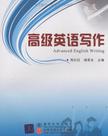高级英语写作
2009-9
清华大学出版社有限公司
周红红,杨若东 主编
291
《高级英语写作》(Advanced English Writing)是北京交通大学研究生英语教研室所承担的中国学位与研究生教育学会“十一五”研究课题《研究生英语读写课程教学的改革与研究》的成果之一,是基于研究生英语作文语料库,通过对研究生英语作文典型错误的统计、分析和研究,专门为我国非英语专业硕士生和博士生编写的英语写作教材。本教材主要操练英语写作的各个主要环节,介绍英语学术论文和常见应用文的写作,通过课堂教学和课内外学习,切实帮助研究生提高实用英语写作能力。 本教材的主要特色如下。 一、针对性。本教材是在对我校非英语专业研究生的英语学习状况和写作需求进行了大规模调研的基础上制定的编写计划,编者们针对学生的弱点和需求,力图在有限的篇幅内为学生们提供最有效的写作信息和思维及语言训练。 二、创新性。目前国内图书市场上常见的写作教材以介绍英语文体为主,内容往往浅显有余而深度不足,不能满足研究生阶段的写作需求。同时,写作教材通常以专题介绍和范文分析为主,缺乏供学生思考和讨论的练习,写作课只能以教师讲授为主,学生们缺乏积极参与的机会,无法通过亲身实践提高写作技能。本教材力求在这两方面有所建树,一是根据研究生阶段的写作需求介绍学术论文和常用应用文的写作技巧及注意事项,二是按照以学生为中心的课堂教学需要编写教学内容,以练为主,通过读写训练实现提高写作能力的目的。 三、实用性。本教材不仅介绍记叙文、描写文、说明文和议论文等一般性英语文体的写作技巧,而且训练学生们学术论文和应用文的写作技能,总结中国学生写作常用的表达,分析和更正他们写作时常犯的错误,为他们在专业学习、求学、留学、谋职和供职时具有一定的英语写作技能打下坚实的基础。
《高级英语写作》(Advanced English Writing)针对目前我国非英语专业硕士生和博士生的英语基础和他们对英语学术论文及常见应用文的写作需求,从最基本的写作技巧人手,由词一句一段一篇到学术研究和论文写作以及申请书、简历、考试作文写作,系统而又深入浅出地讲解写作要点,分析学生写作弱点,通过大量有针对性的练习帮助学生实现在短时间内最大限度地提高写作水平的目的。
Chapter One Basic Writing Techniques 1.1 Diction 1.1.1 Formal and Informal Words 1.1.2 General and Specific Words 1.2 Grammar 1.2.1 Subject-Verb Agreement 1.2.2 Pronoun-Antecedent Agreement 1.2.3 Pronoun Reference 1.3 Mechanics 1.3.1 Capitalization 1.3.2 Punctuation 1.3.3 ManuscriptChapter Two Sentence Style 2.1 Basic Sentence Patterns 2.1.1 Clauses 2.1.2 Kinds of Sentences 2.2 Sentence Unity 2.2.1 Preservation of Sentence Unity 2.2.2 Precautions Against No Unity 2.3 Sentence Coherence 2.4 Sentence Expansion 2.5 Sentence Variety 2.5.1 Varying Sentence Length and Emphasis 2.5.2 Varying Sentence Beginnings 2.5.3 Inverting the Normal Word Order 2.5.4 Varying Simple Sentences 2.5.5 Simple, Compound and Complex Sentences Combined Chapter Three Sentence Improvement 3.1 Parallelism 3.2 Faulty Modification 3.2.1 Stacked Modifiers 3.2.2 Misplaced Modifiers 3.2.3 Dangling Modifiers 3.3 Sentence Fragments 3.3.1 Revising Dependent Clause Fragments 3.3.2 Revising Phrase Fragments 3.3.3 Revising Appositive Fragments 3.3.4 Using Fragments Intentionally 3.4 Choppy Sentences 3.5 Run-ons 3.6 Stringy SentencesChapter Four Paragraph Writing 4.1 Paragraph Structure 4.1.1 Topic Sentence 4.1.2 Supporting Sentences 4.1.3 Concluding Sentence 4.2 Paragraph Unity 4.3 Paragraph Coherence 4.3.1 Repetition of Key Nouns 4.3.2 Use of Consistent Pronouns 4.3.3 Transition .Signals 4.4 Paragraph Outlining 4.4.1 The "Parallel Form" Rule 4.4.2 The "Equivalent Value" Rule 4.5 Paragraph Development 4.5.1 Chronological Order 4.5.2 Logical Division of Ideas/Order of Importance 4.5.3 Comparison and Contrast 4.5.4 Cause and Effect 4.5.5 Exemplification 4.5.6 Quotations 4.5.7 Paraphrases and SummariesChapter Five Essay Writing 5.1 Characteristics of an Effective Essay 5.2 Structure of an Essay ……Chapter Six Making a ResearchChapter Seven Writing the ThesisChapter Eight Writing for Special PurposesKeys to ExercisesBibliography
Clustering Clustering is another brainstorming activity to generate ideas. As a prewriting invention technique, clustering is a visual way to show logical relations between and among ideas. It is a non-linear brainstorming technique whose results yield a visual representation of the subjects and organization. It asks that you be receptive to words and phrases and trust your instincts. So, you can always start with a stimulus word——the word or phrase that represents the first, tentative idea of the whole——circled in the center of the page. Then, as each new word or idea strikes, give it a new circle and draw a line from it to the preceding circle. When some new ideas occur, radiate them from the stimulus word or from any word/phrase that seemed to prompt the new idea or strand. Write quickly and be sensitive to any emerging structure. Keep clustering until the moment when a sense of the whole is achieved, that a structure has made itself known. It is suggested that the end layer of this clustering should be examples, facts, etc. which may be used for supporting sentences in a paragraph. Clustering is a generative tool (i.e. makes use of the unconsciousness in retrieving information) that helps to connect thoughts, feelings, and ideas not connected before. It loosely structures ideas as they occur in a shape that allows for the further generation. It taps the associative powers in a self-organizing process, encouraging a writer to create personally meaningful patterns. On the other hand, clustering can frustrate more linear thinkers——-those who need neatness and order to think clearly.

此书内容比较简单,只是一些基本的常识的写作,达不到高级写作的水平。这书是针对我国非英语硕士编写的,甚至对英语专业的本科学生都觉得简单了,看了之后觉得枉称“高级”二字。我买错了...
质量不错,获益匪浅,对英语提高很有帮助。
目前只看了一点点,但是感觉写书的人很专业,文笔很西化,有点原汁原味的感觉,还配有练习。效果很好的。
很实用,essay writing部分有点弱
全英文的教科书,比较详细和基础
很实用啊,很喜欢,基础部分很扎实。
好
,正版
看起来不错的书,是指定教材,帮同学买的,她很喜欢
正在迫切提高写作水平
教材用书,博士课程用
总的来说,质量还是不错的
书的质量还行,就是打折太少,老师强力推荐的教材
书不错,不过内容挺多,好好学吧